Esophagus
The esophagus is a muscular tube that connects the mouth to the stomach. It plays a crucial role in the process of digestion by transporting food from the mouth to the stomach.
Anatomy of the Esophagus
The esophagus is approximately 25 centimeters long and is located behind the trachea. It consists of several layers of tissue, including mucosa, submucosa, muscularis, and adventitia. The muscularis layer is responsible for the peristaltic contractions that propel food downwards toward the stomach.
Function of the Esophagus
When food is chewed and swallowed, it passes through the esophagus via a series of coordinated contractions called peristalsis. The lower esophageal sphincter, located at the junction of the esophagus and the stomach, opens to allow food to enter the stomach and then closes to prevent the backflow of stomach contents.
Common Disorders of the Esophagus
- GERD (Gastroesophageal Reflux Disease): This condition occurs when the lower esophageal sphincter does not close properly, leading to the backflow of stomach acid into the esophagus.
- Dysphagia: Difficulty in swallowing, which can be caused by various factors such as esophageal strictures or neurological disorders.
- Esophageal Cancer: A malignancy that can develop in the esophagus, often associated with chronic irritation from factors such as smoking or alcohol consumption.
Study Guide
- What is the function of the esophagus in the digestive system?
- Describe the pathway of food from the mouth to the stomach via the esophagus.
- Explain the role of peristalsis in the esophagus.
- What is the lower esophageal sphincter and how does it function?
- Discuss one common disorder of the esophagus and its potential causes.
◂Science Worksheets and Study Guides Seventh Grade. Bacteria and Viruses
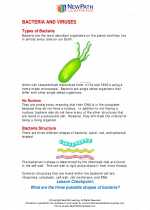
 Activity Lesson
Activity Lesson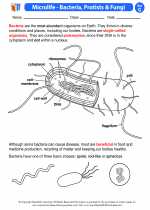
 Worksheet/Answer key
Worksheet/Answer key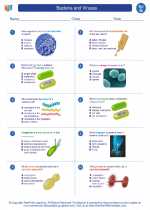
 Worksheet/Answer key
Worksheet/Answer key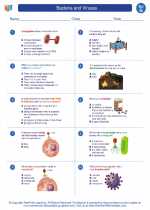
 Worksheet/Answer key
Worksheet/Answer key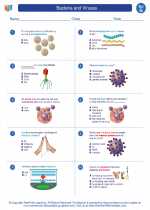
 Worksheet/Answer key
Worksheet/Answer key
 Vocabulary/Answer key
Vocabulary/Answer key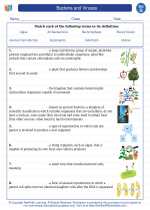
 Vocabulary/Answer key
Vocabulary/Answer key
 Vocabulary/Answer key
Vocabulary/Answer key
 Vocabulary/Answer key
Vocabulary/Answer key
